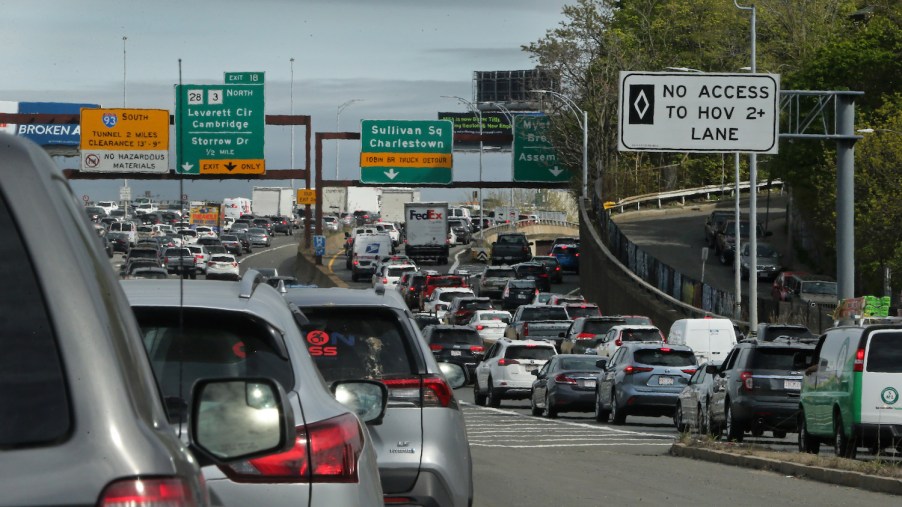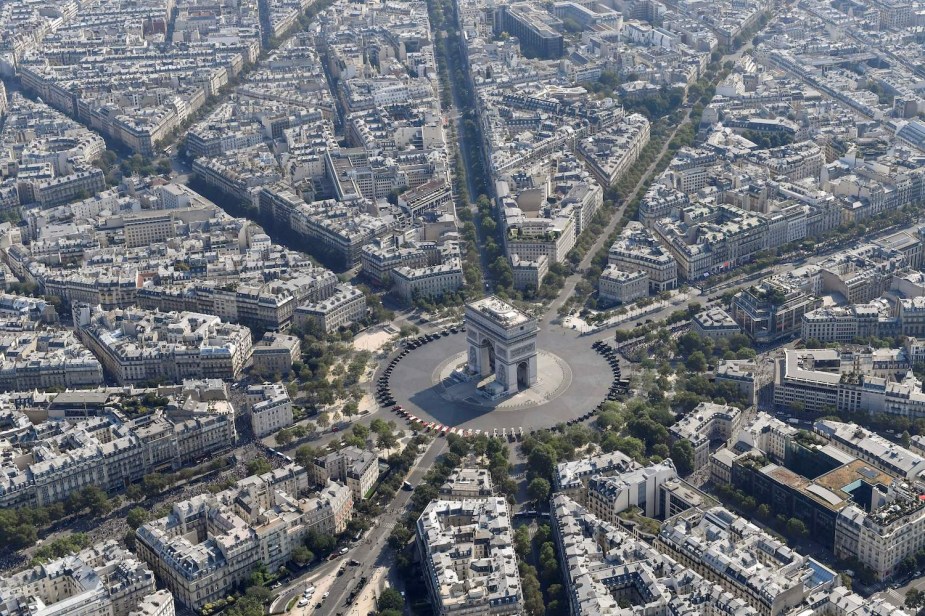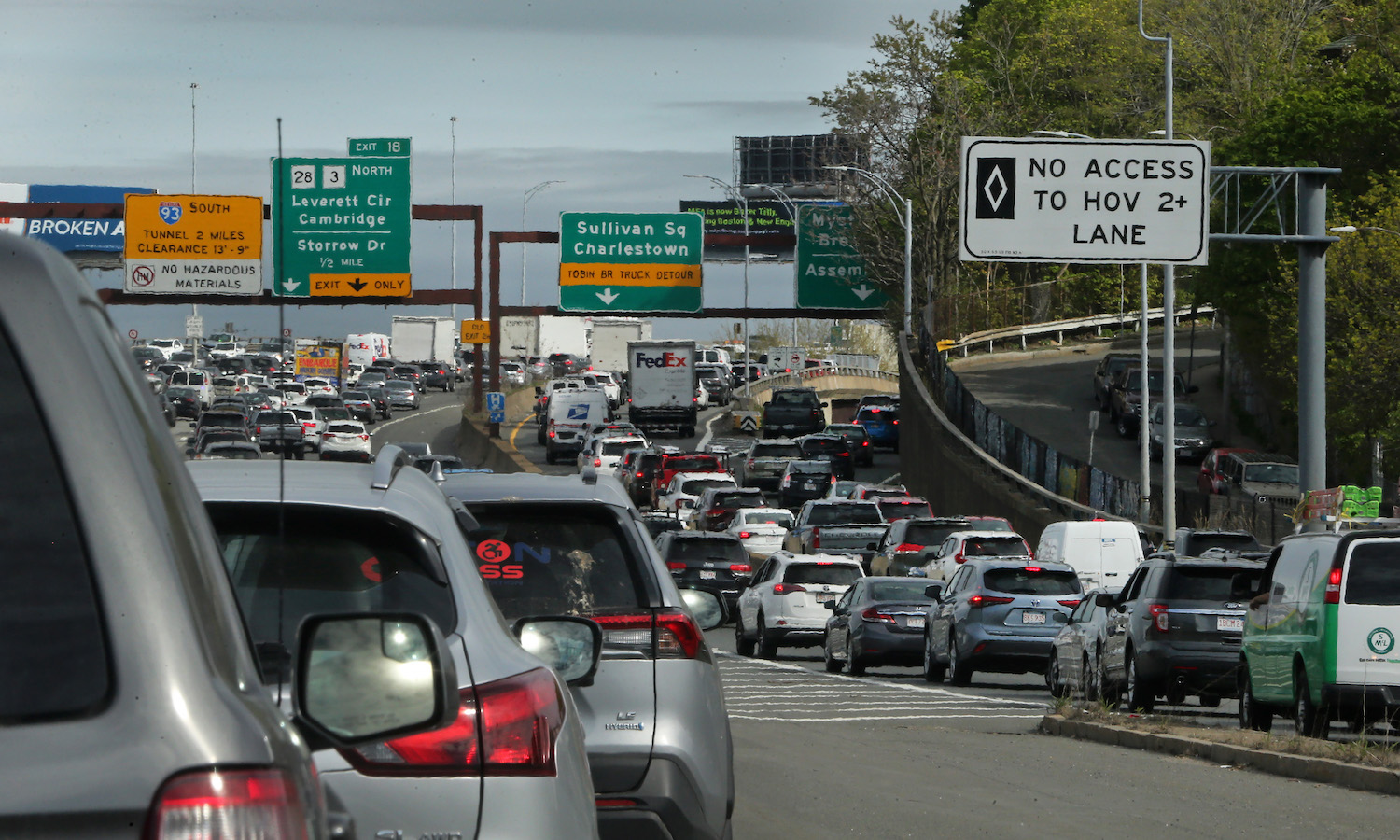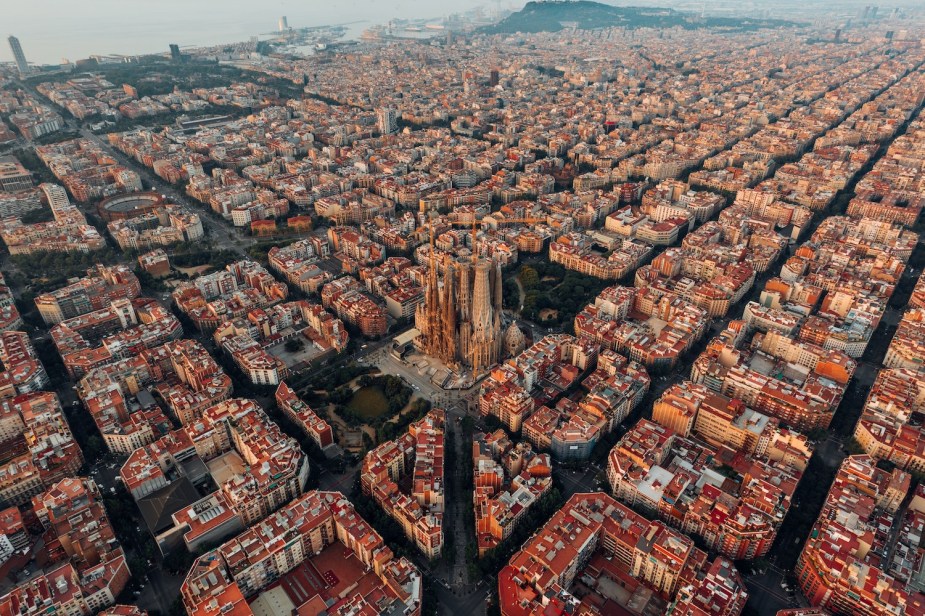
Here’s Why Boston Might Have to Ban Cars While Manhattan Might Not
Several Sci-Fi writers and thinkers have imagined a future in which New York City bans cars. But The Big Apple‘s grid layout may allow it to preserve the right to drive for generations to come. Boston, with its more European hub-and-spoke layout, may have a tougher time keeping cars on its streets.
Barcelona versus Paris

Between 1853 and 1870, city planners redesigned Paris. They tore down entire blocks to create a series of thoroughfares in a hub-and-spoke design centered around the Arc de Triomphe.
During the 1850s, Barcelona’s planners were reimagining their city too. In an effort to democratize access to resources, Barcelona decided against the hub-and-spoke centered around the harbor that many European port cities favored. Instead, they insisted on a universal block size and shape so the city could extend as a grid in all directions.
In recent decades, Paris’ design has made increased traffic unwieldy. As a result, France is moving towards a car-free Paris. By 2024, through traffic will be prohibited in the city center. Only residents or local deliveries will be able to use the streets at the center of town.
Barcelona, on the other hand, went through a second redesign. Planner combined many of its blocks into 3×3 superilles. These are bounded by high-speed thoroughfares designed for cars and bicycles. Their corners often offer large, underground parking structures. But at the heart of these “superblocks” are one-way streets, pedestrian plazas, and green spaces.
New York versus Boston

Boston has a more traditional hub-and-spoke street pattern extending from its harbor. Manhattan, on the other hand, is known for its grid. Though the analogy is far from perfect, Paris and Barcelona may offer a preview of the future of these two United States cities.
In the distant future, when the population of the US East Coast–and its cities–has doubled, we will have to reimagine driving. If New York were able to convert to a Barcelona-style superblock layout, it might be able to protect the right to drive for generations to come.
The winding streets of Boston, however, have been plagued with serious traffic issues for years. The Big Dig has already sought to alleviate some of these problems. But Paris may hold a warning that there is only so much optimization possible with Boston’s current layout.
The city of the future

As we build new cities and extend old ones, city planners may well incorporate a superblock system. Such a layout would be ideal for car owners and ground transportation such as buses. It would also guarantee walkable neighborhoods for folks who prefer not to have a car.
But what about older cities not designed with cars in mind? Perhaps the slower pace of life demanded by poor traffic will make these cities appealing to people who prefer to walk. Perhaps their important place in our history will make them very popular tourist destinations–even if few people want to live and work there. Whatever the future holds for cities like Paris and Boston, there is a good chance Barcelona and New York City will take their place among the other car-friendly cities of the future.
Next, read about how Barcelona’s intersection design makes it car and bicycle-friendly or watch Vox take a deep-dive into Barcelona’s Superblocks in the video below:



